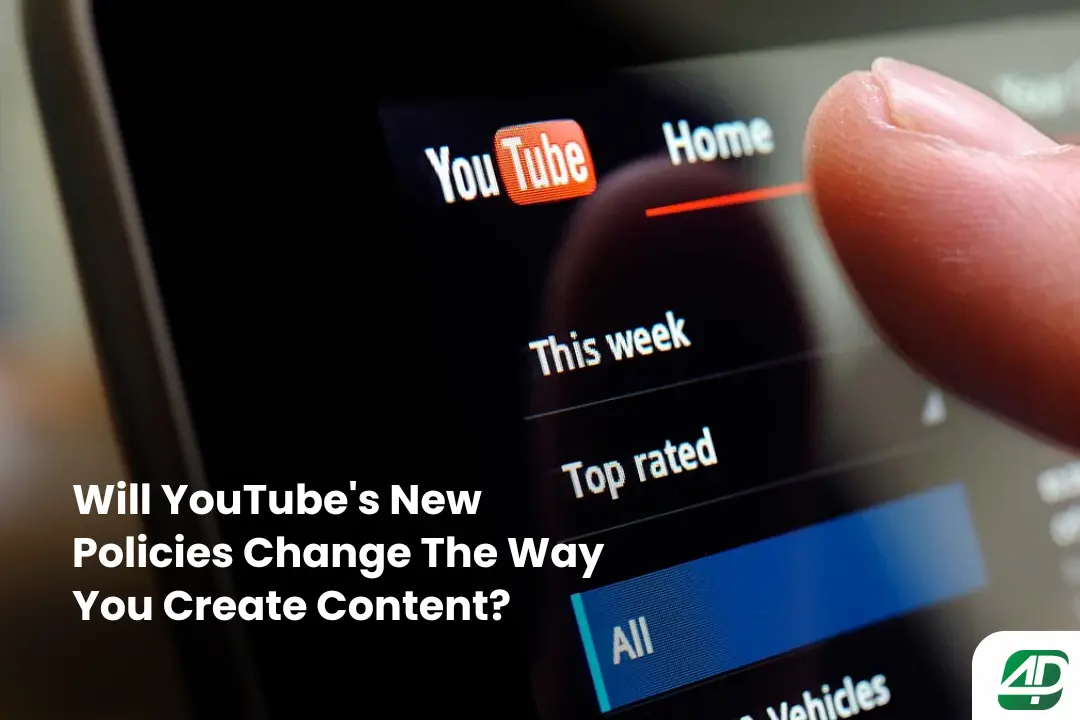Introduction
In July 2025, YouTube rolled out a series of policy updates that are stirring conversations across the creators and marketing communities. From stricter content moderation to monetisation thresholds and even rules around the use of AI in video content, creators and brands alike are now facing a new set of challenges and opportunities.
If you're wondering how these YouTube policy updates will impact your content creation game, then this blog is for you.
Highlights:
Why did YouTube introduce the new policies?
With the explosive growth of repeated and inauthentic video content and AI-generated media, YouTube aims to:
-
Increase platform transparency and user trust.
-
Curb the spread of misinformation and manipulated AI content.
Align with global content regulations and ad safety standards.
Protect creator revenue and ensure quality content is promoted.
Essentially, YouTube is trying to maintain its position as a responsible platform while still fostering creativity and monetisation. The question now is: how will this affect content creation strategies?
Top 5 YouTube policies impacting your content

1. AI disclosure rules :
What is the policy about: YouTube policies require content to be original, and if content includes AI-generated visuals, voiceovers, or simulations of real people/events, then creators must have the right to use the content or should disclose a ‘made with AI’ tag.
Impact of new policy: It is majorly impacting the creators or marketers using AI influencers or voice cloning. If you are creating AI-generated video for promotional materials for B2B exhibitions, then make sure you mention the AI-made tag.
2. Updated monetisation criteria :
What is the policy about: YouTube has raised the bar for entering the Partner Program, requiring more watch hours and subscribers. For small creators and niche brands, this means longer timelines before earning revenue. YouTube monetisation rules now require a well-thought-out strategy.
Impact of new policy: YouTube viewers should find the content appealing and interesting to watch; hence, this policy was created. You might create a video on the existing topic, but it should follow a distinct format. That your audience can easily distinguish the difference between the two contents. Such content is approved for monetisation.
3. More original content :
What is the policy about: YouTube is prioritising original and unique content over reposts, compilations, or heavily AI-generated videos. YouTube is trying to minimise the repetitive content on its platform, which is degrading the quality. That means if you create the original content, which adds value to your audience, then YouTube will reward you.
Impact of new policy: This policy impacts creators and brands relying on repurposed clips or automation. These creators will need to pivot to storytelling-based and authentic content.
4. Policy on synthetic media :
What is the policy about: Have you ever been misled by viral videos of influential leaders engaged in inappropriate actions, only to find out they were created using deepfakes? Such videos create a negative view of content, not knowing if it's real or not.
Impact of new policy: Hence, content featuring deepfakes without context or intent to mislead is now strictly prohibited. This will impact the creators who use influencer marketing campaigns or fictional storytelling using synthetic media.
5. Short-specific guidelines :
What is the policy about: YouTube Shorts now follows its own set of stricter content and monetisation rules. Which is going to impact creators who make videos in the same format. Marketers expeimenting with Shorts must align with these YouTube content guidelines to stay visible and profitable.
Impact of new policy: If you are a creator, you need to invest more time in planning and producing original, transparent content. Brands will have to ensure every piece of content aligns with YouTube’s guidelines to avoid demonetization or take-downs. And if you’re a marketer, you must rethink the usage of synthetic models or AI in video content, assuring your content follows these YouTube policies.
How to make your content YouTube-friendly?
As above, we understand the policies; let's now thrive in this new landscape. Here are three smart adaptations for YouTube's tight guidelines.
-
Be transparent with AI usage: Clearly label any AI-generated visuals or voiceovers in your videos. Build credibility with your audience by disclosing that AI was used; this aligns with both YouTube content guidelines and audience trust.
-
Original brand storytelling: Whether it’s behind-the-scenes content, interviews, or animated explainers, originality wins. Create assets that are impossible to replicate.
- Diversify video formats: Make room for longer videos, YouTube Shorts, and community posts to maximise your reach. Use different video formats that align with evolving content creation strategies.
How The 4p Solutions can help you
At The 4P Solutions, a B2B social media agency, we help you decode platform changes and align your strategies to maximise reach and revenue. Whether you're navigating YouTube monetisation rules, adapting your AI strategy, or looking to design compliant video marketing trends, we’ve got you covered.
We’ll audit your content, optimise your channel, and craft data-driven strategies that follow YouTube policy updates, while ensuring your content remains authentic and profitable. Connect with The 4p Solutions at mktg@the4psolutions.com or call us at +91 85919 37177 to learn more.
Conclusion
YouTube’s new policies may seem overwhelming, but they’re designed to create a safer, more authentic space for creators and audiences alike. By understanding what’s changing and how to adapt, you can continue to grow your channel without compromising on creativity or compliance.
Don't let the updates slow you down; partner with b2b social media marketing experts who understand the shifts and can turn them into success. With 4P Solutions by your side, your video content will stay future-ready and audience-focused.
FAQ’s:
YouTube may remove your video or restrict monetisation. Transparency is now mandatory.
Yes, but the bar is higher. You’ll need consistent quality content and smarter growth strategies.
Yes, but you must clearly label them, especially if they mimic real people or events.
Visit Google’s page and read the policies, and make sure all are validating.

